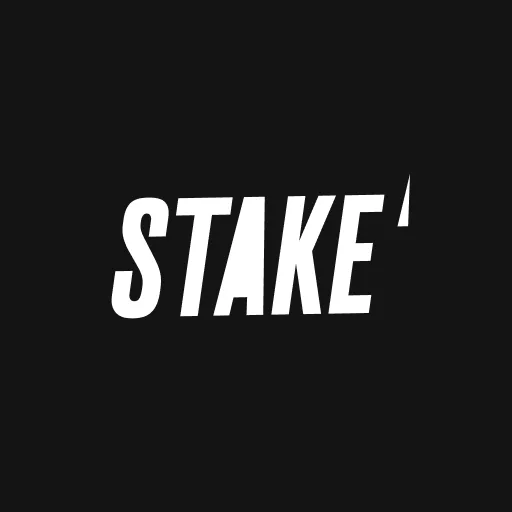Key takeaways
Buying international shares from Australia is as simple as signing up to an online share trading platform that offers global stocks.
But while 83% of Australians have bought Australian stocks, less than 30% have invested in US stocks, and only 6% have invested in UK stocks, according to Finder research.1
Thankfully we're here to help take you through the process of buying international shares (and everything else you'll need to be aware of).
Step 1: Compare trading platforms that offer global stocks
If you want to buy international shares, you'll need to find a trading platform that gives you access to foreign markets. Naturally, not all trading platforms are created equal.
Check out some of the main platform features below and then compare your options with our trading platform comparison table.
International stock trading platforms
Compare other products
We currently don't have that product, but here are others to consider:
How we picked theseFinder Score for share trading platforms
We've scored over 30 share trading platforms assessing them for their core features, fees, customer experience and accessibility. Our experts give each platform a score out of 10.
Important: Share trading can be financially risky and the value of your investment can go down as well as up. “Standard brokerage” fee is the cost to trade $1,000 or less of ASX-listed shares and ETFs without any qualifications or special eligibility. If ASX shares aren’t available, the fee shown is for US shares. Where both CHESS sponsored and custodian shares are offered, we display the cheapest option.
Access to markets.
Make sure the platform you're signing up to actually offers the stocks you want to buy. This sounds obvious but signing up to a global trading platform won't automatically get you access to all foreign markets.
The big ones are the US exchanges like the New York Stock Exchange (NYSE) and the National Association of Securities Dealers Automated Quotations (Nasdaq), which most providers will allow you to access, but not every account will let you trade everywhere in Europe and Asia.
Brokerage fees.
How much will it cost you to buy shares and ETFs from global exchanges? Confirm if it's a flat fee or a percentage fee and if the fee is the same across all markets.
For example, CMC Invest charges $0 brokerage to buy US, UK, Japanese and Canadian stocks, but then has high brokerage on stocks from other countries ($59.95 per trade). So while it might be a good choice for investors looking to buy US stocks, it might not be the best option for those wanting to invest in European markets.
Currency conversion fee.
A key difference between trading Australian and global stocks is that most platforms will charge you some form of foreign exchange fee when you purchase shares from international exchanges.
This will also be true of platforms that offer free brokerage. In fact, brokers that charge $0 commission will often charge a higher foreign exchange (FX) fee. Currency conversion fees are usually charged in pips or basis points (bps). These represent a percentage of the amount that you're transferring (see below for info on how to calculate your fx fee using pips and bps.
Trading hours.
Many platforms now offer trading access outside of regular trading hours (including pre-market and after-market), which can be handy when you're looking to trade on exchanges that operate in a different time zone to Australia, like the US and European markets.
Research tools.
What investment research tools are available? Are you seeing real-time market information or is there a delay? Are the research tools free to use or do they cost extra? It's a lot easier to buy low and sell high when you've done your research, especially on markets and stocks you might be less familiar with.
Step 2: Open your account
Once you've decided on an online broker, you'll need to open your share trading account.
To open an international share trading account, you'll generally need to meet the following eligibility criteria:
- Be 18 or over
- Have an Australian residential address
- Have a mobile number
As part of the application process, you'll also typically need to provide the following:
- Personal photographic identification (such as your driver's licence, passport and/or proof of age card)
- An Australian business number (ABN) and/or tax file number (TFN)
When opening the account, you'll be asked if you'll be trading as an individual, with a joint account (for example, with your partner), as a company or organisation or on behalf of a trust, like a self-managed super fund (SMSF).
Because share trading has income and tax implications, you must provide details of your income and occupation. Along with your personal information, you may be required to disclose the source of your income and the origin of your financial position.
Already have a share trading account?
Sometimes, providers will require that you open an account for local shares and a separate account for international shares. Since you're already signed up to the broker, most of your information will already be saved, meaning buying international shares should be a simpler process.
Step 3: Fund your account
If you want to start trading, you'll need to make sure you have enough funds in your linked account to execute the trades, plus any broker fees that will apply.
Most trading platforms support deposits via bank transfer or card, but beware that certain deposit methods may come with additional fees.
Once your Australian dollars have been deposited, you'll either be able to trade directly using your AUD, or need to convert some of it into the relevant foreign currency before you can buy international stocks.
Remember that when you transfer funds into your linked foreign currency account, you'll normally have to pay a currency conversion fee. These currency fees (or fx fees) are typically charged as percentage in points (pips) or basis points (bps). It can be a bit confusing, but put simply, a pip represents a currency exchange rate difference, whereas bps refers to an overall percentage change (see the examples below).
It can take a few days for your funds to be loaded into the cash account, so keep this in mind when you decide you'd like to make a trade.
How Pips and Bps fees work
- Pips example: Lets say an online broker is charging a 50 pips fee to convert AUD into USD. A 50 pips fee means 0.0050 is deducted from the AUD/USD exchange rate. So if the exchange rate is 0.6500 (i.e. AU$1 = $US0.65), a 50 pip fee reduces the rate to 0.6450 (0.6500-0.0050). So instead of receiving US$65 for AU$100 converted, you'll get US$64.50. That means the fee in this example is US$0.50, though this will depend on the exchange rate.
- BPS example: Now, say an online broker is charging a 50 bps fee to convert AUD into USD. Unlike pips, basis points are calculated as a percentage of the total amount exchanged, rather than just the exchange rate. An easy way to remember is that a 50 bps fee means you're charged US$0.50 for every AU$100 you're converting.
Step 4: Select the shares you want to invest in and start trading
Once you've set everything up, you can trade online through your new international share trading account.
Expect to see a dashboard with features such as current share prices and changes over time and options to buy, sell or research.
You may even find tutorials and introductory material to help acquaint you with the available features.
Finder survey: Which countries have Australians bought overseas stock in?
| Response | |
|---|---|
| Australia | 83.23% |
| US | 29.94% |
| UK | 5.39% |
| China/Hong Kong | 4.79% |
| Other | 4.79% |
| Canada | 3.59% |
| Europe (EU) | 3.59% |
| Japan | 3.59% |
| NZ | 2.99% |
| Singapore | 2.4% |
| India | 1.5% |
| Africa & Middle East | 0.3% |
Other ways to invest in international shares
There are 3 main ways that you can get exposure to global shares from Australia:
- Invest directly in shares listed overseas, such as Meta and Apple, by using an international share trading platform.
- Buy a global-themed exchange traded fund (ETF) or managed fund that tracks the performance of international stocks (like an S&P 500 ETF).
- Trade CFDs (contracts for difference) that track global shares. (Note: This isn't the same as buying shares directly. CFDs are advanced trading instruments best suited to experienced traders.)
Invest in global exchange traded funds (ETFs)
Exchange traded funds (ETFs) provide alternative ways for Australians to access international shares.
An ETF is a fund traded on an exchange in the same way as a share. An ETF consists of many different types of assets. For example, stock ETFs can comprise hundreds of shares from specific industries such as energy or mining. ETFs mirror the movements and returns of a particular market. There are many global market ETFs that are listed in Australia, including the following:
- BetaShares FTSE 100 ETF
- iShares S&P Europe ETF
- iShares MSCI Japan ETF
- Vanguard US Total Market Shares Index ETF
- SPDR S&P World ex Australian Fund
Invest in international shares through managed funds
It’s possible to invest in international shares through managed funds. Some global-themed managed funds are available through select online share trading platforms thanks to the ASX Mfund settlement service.
When you buy and sell units in an mFund, you can track your units along with other investments such as shares and ETFs in a single place online.
Is it worth buying international shares?
Buying international shares means you can diversify your portfolio and access some of the biggest (and best-performing) companies in the world.
Many of the household names that you would be familiar with, such as Google, Apple, Tesla, McDonald's, Ford, Unilever and Nvidia, are foreign-owned and listed overseas despite their prevalence in Australia.
All of these businesses are listed on either the S&P 500, the Nasdaq Composite or the Dow Jones.
Of course, US stocks are only one (admittedly pretty big) piece of the international pie.
Australia's stock market accounts for less than 2% of global trade and if you exclusively focus on buying Australian shares, you're potentially over-exposing yourself to Australia's economic fortunes.
For example, if Australia goes into a recession that does not impact the rest of the world, your portfolio will be negatively impacted compared to an investor who buys shares in both Australia and in overseas markets.
Despite the massive opportunities overseas, there is still a myth that investing overseas from Australia is more time-consuming and expensive.
In fact, it is the complete opposite, with the cheapest brokerage and smaller minimums often offered by global trading platforms.

"Investors still have a bias for investing via the local market. However, they are increasingly gaining exposure to the US. The US' leadership on themes including AI contributes to the fact that it continues to attract most of the world's high profile listings."
Tax on international shares in Australia
You're generally taxed the same amount on international shares as you are on Australian shares, however there are a few key differences.
As with Australian shares, when you sell your international shares you'll need to pay capital gains tax (CGT) to the ATO on any profits you've made. This tax rate is the same as your marginal tax rate, unless you've held the stock for 12 months or more. In this case, you're eligible for a 50% CGT discount.
Dividends however are treated a little differently. When Australian stocks pay dividends, they may come with franking credits, which can reduce your tax bill.
International stocks don't offer franking credits, instead a part of your dividend earnings may be taxed by the foreign government before you receive it.
For instance, the US government charges 15% as a withholding tax on dividend earnings to overseas investors. So, if you received US$100 in dividends from your US stock portfolio, that would be reduced to US$85 before you can withdraw it. Then if your marginal tax rate in Australia is higher than 15%, you'll be taxed the difference by the ATO. On the downside, if your marginal rate is lower than 15%, you wont get a refund for the extra tax you've paid.
For these reasons, many Australian dividend investors prefer to buy stocks listed on the Australian Securities Exchange (ASX) rather than on overseas exchanges.
One final consideration is the exchange rate between the foreign currency you're trading in and the AUD. Exchange rate fluctuations can badly impact how much you actually profit. For instance, you might make a profit in USD, only to lose a significant chunk of that when converting it back to AUD.
What's the difference between Australian and international share trading?
Australia
The Australian share market is made up of businesses listed on either the Australian Securities Exchange (ASX), the National Stock Exchange (NSX) or the Chi-X.
While not every business has to operate in Australia to list here, the majority do. Investors on the ASX trade between 10am and 4pm (Sydney time), Monday to Friday, with Australian investment options overall making up around 2% of the global trade.
Australia's stock market is more heavily weighted towards banking and mining stocks compared to many overseas exchanges.
International
You can trade shares from global markets around the world 24 hours a day, subject to local market hours. You'll gain access to more options, but you'll also experience new risks and challenges.
International stock exchanges include the London Stock Exchange (LSE), the NYSE, Nasdaq and many others.
Pros of buying international shares
- Gain access to a wider variety of investment options.
- Most of the largest companies in the world trade on foreign markets.
- Gain exposure to different economic forces and protect yourself against downturns in the Australian market.
- You can trade 24 hours a day rather than only within set business hours in your country.
- When trading internationally, there may be a larger pool of investors, so you might find it easier to find a buyer for your shares.
Cons of buying international shares
- Exchange rates can fluctuate and can significantly hurt (or help) your return on investment.
- Foreign policy can affect your returns. It's possible that changes to another country's foreign policies, local instability or other issues can impact the value of your investment in ways beyond your control. This is a largely uncontrollable risk.
- Taxation and related issues may be more complicated when trading international shares.
- Added costs including foreign exchange fees and levies.

Look for lower exchange rates, research tools that allow you to make more reliable investments and flat broker fees rather than percentage rates. Where applicable, it may be worth accepting higher flat fees in exchange for lower percentage rates. Avoid low maximum limits that might constrain your trading.
Making a lot of small trades? You may want to avoid flat fees that take a big chunk out of the potential profits of each trade and stick to percentage rates that will cost you less. Low maximums are less of an issue, but high minimums might be a problem.
How will you diversify your portfolio? Not all accounts will give you the same options. Plan what kind of trades you want to make and consider whether a given account will let you trade CFDs, whether you can trade ETFs and if you are able to do forex trading through the same platform."
How stocks work in 60 seconds

Sources
Ask a question
More guides on Finder
-
Best short term investments in Australia for 2025
If you have funds to invest for 2 or years or less, you can safely earn up to 5% p.a. through a high interest savings account, bonds or ETFs.
-
The best ASX penny stocks (updated weekly)
Best performers included European Metals Holdings, True North Copper and Cobre.
-
How to buy Washington H. Soul Pattinson and Company shares in Australia
Steps to owning and managing Washington H. Soul Pattinson and Company shares from in Australia.
-
How to invest in copper in Australia
Copper is an industrial metal with many applications. Here’s what you should consider before investing.
-
ASX lithium stocks
Lithium is a precious metal with increasing demand. Here’s what you should know before you invest.
-
How to invest in financial stocks in Australia
Financial stocks drive the economy and affect many aspects of a consumer’s economic life.
-
How to invest in the S&P 500
Find out the different ways you can invest in the S&P 500 index from Australia.
-
How to buy Viva Energy shares in Australia
Steps to owning and managing Viva Energy shares from in Australia.
-
How to buy Wells Fargo shares in Australia
Steps to owning and managing Wells Fargo shares from in Australia.
-
How to invest in cannabis stocks
Just 5 years ago, few investors took cannabis stocks seriously; today, as billions of dollars pour into the sector, few doubt that it will be one of the next big disruptors.
